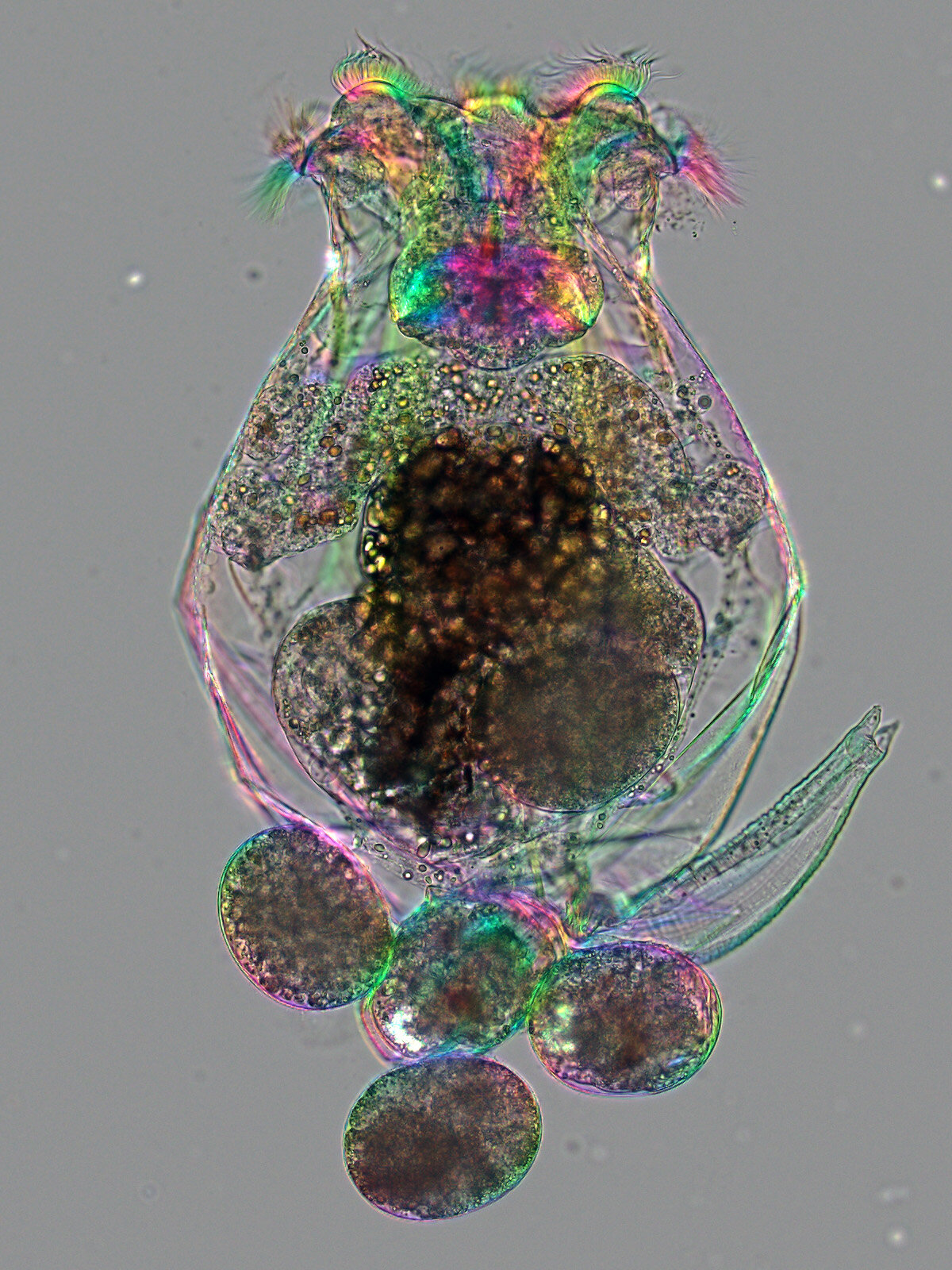A female Brachionus manjavacas rotifer, measuring 350 µm in length, is the focal point of this magnified image taken under a microscope. Despite its small size, this rotifer possesses hair-like cilia on top that are used for both swimming and feeding. By introducing the components of the CRISPR gene editing system into the large reproductive system of the female rotifer, specific genes can be edited within the four developing eggs she carries at her posterior end. These eggs will hatch within a day, leading to offspring that carry the edited genes. The image itself, captured with a polychromatic polarizing microscope, showcases the typically transparent rotifer in vibrant colors. The credit for the image goes to Michael Shribak and Kristin Gribble.
Rotifers are ideal subjects for scientific studies due to their small size and ability to be observed under a microscope. They can also be easily cultivated in laboratory settings, providing researchers with valuable insights into this particular animal kingdom. However, the limitation of not being able to manipulate rotifer genetics has hindered the scope of experiments that can be conducted. To overcome this obstacle, Kristin Gribble and David Mark Welch from the Marine Biological Laboratory (MBL) developed a method using the CRISPR-Cas9 gene editing system to precisely alter the genomes of rotifers. In their experiments, they successfully edited two genes and introduced a genetic sequence, resulting in inherited changes in subsequent generations of rotifers. Mark Welch emphasized the practicality of their method in generating a large number of genetically modified rotifers efficiently, benefiting their own research as well as expanding the opportunities for other scientists to work with these animals.
The MBL team aims to establish rotifers as model organisms that can be genetically manipulated. Rotifers are unique invertebrates with close connections to the ancestors of modern animals, making them invaluable for studying aspects of evolution, development, and other biological processes. With funding from MBL Interim Director Melina Hale, Gribble and Mark Welch embarked on the task of developing a method for using CRISPR-Cas9 to manipulate rotifer genomes. The initiative to incorporate a greater variety of model organisms into research became known as MBL’s New Research Organisms initiative. CRISPR-Cas9, known for its precision in DNA cutting, allows researchers to alter or deactivate genes. However, the challenge was successfully delivering the CRISPR system to the elusive rotifers, which maneuver in water like specks of fine sawdust. After numerous attempts, Haiyang Feng, the first author of the study and a former postdoctoral scientist at MBL, discovered a solution. By immersing the rotifers in a high-viscosity solution and administering a mild anesthetic, their movements were slowed enough to be captured individually using gentle suction through a hollow needle. The gene editing system was then injected into the part of the rotifer’s body that supplies nutrients to the eggs. The mutations carried by the hatched offspring were passed down to subsequent generations. For instance, by disabling the vasa gene, essential for animal development, the rotifers eventually ceased reproduction after a few generations. Turning off the mlh3 gene prevented the rotifers from producing male offspring, and introducing a genetic code sequence with “stop” instructions achieved the same effect.
Gribble and Mark Welch plan to utilize the CRISPR-based method to genetically alter rotifers for their respective research. Gribble, an associate scientist at MBL, investigates how a mother’s age can impact the traits of her offspring, specifically exploring the role of mitochondria, the cell’s energy-producing component. The new approach will enable her to tag or modify mitochondria in rotifers. Mark Welch intends to use the method to delve into the molecular mechanisms behind a particular species of rotifer’s ability to revive after desiccation, including their DNA repair processes. These studies are just the beginning, as Gribble anticipates the new tool and the ease of raising rotifers in the lab will allow researchers to pose and answer countless questions that have yet to be considered.

